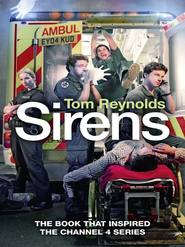По всем вопросам обращайтесь на: info@litportal.ru
(©) 2003-2024.
✖
More Blood, More Sweat and Another Cup of Tea
Настройки чтения
Размер шрифта
Высота строк
Поля
We were all really impressed with the neatness and effectiveness of the strapping. I wanted to take a photo of it because it doesn’t often look as good as it did with that job.
As mentioned, she wasn’t too light, and it’s really tricky to manoeuvre a six-foot-long orthopaedic stretcher out onto a balcony, around half the building and down two flights of stairs. At one point we had to suspend the poor woman’s head over the balcony in order to get her around the awkward architecture of her building—pretty lucky that she wasn’t looking down at that point.
The job itself went like clockwork.
My back, however, was starting to hurt from the less-than-safe lifting that we needed to do to get the woman out her flat and into the ambulance.
We then had a couple of ‘nothing’ jobs—coughs, colds and bellyaches.
We got to around midnight when we were sent on a call for a ‘17-year-old male, has a knife, cutting wrist, suicidal’. As it was in the street I thought that we’d go and have a look—if he was violent then we could soon drive off and await the arrival of the police.
The young man was lying on the floor, his left hand was covered in blood and there were already two policemen there. They looked happy to see us.
A quick assessment later and it turned out that the patient had nearly severed his left little finger. He was covered in blood and refusing to say anything except that he wanted to die. I managed to get a ‘quick and nasty’ bandage on his hand while the police and I wrestled with him. He wasn’t very happy with being put into the ambulance and once inside fought with us like a man possessed. Blood was everywhere, he was trying to bite us and the police had to handcuff him (which for some reason, probably paperwork, they really didn’t like doing). It took the three of us struggling with him to get him to hospital and when he reached the department there needed to be six police guarding him in the psychiatric room.
He was, to use an ambulance service technical medical phrase, ‘proper mad’.
I felt sorry for the fellow—he didn’t ask to go out of his gourd.
I also felt pain.
Pain in my back.
While fighting with the patient in the back of the ambulance I had somehow wrenched my back and the whole right side of my body was in pain.
So we went back to station, I filled out the required paperwork and went home. I stayed home for the next two nights, partly due to the pain and partly due to a desire on my part to avoid exacerbating the injury.
Gassed and Splinted (#ulink_e8f23f12-16cf-5d13-a361-acd5ccf2696f)
I often bemoan the fact that I tend not to get sent to many jobs involving ‘trauma’. If you’ve been stabbed, I’ll be down the road picking up a matern-a-taxi. If you’ve fallen out of a second-floor window, I’ll be one street over dealing with the sleeping drunk. And if you’ve thrown yourself under a tube train, I’ll be one stop down dealing with the twisted ankle.
It’s not that I like people to be badly hurt, it’s just that I occasionally like to have a job that I have to think about. So the smallest little traumatic injury makes me happy.
We were sent to a 50-year-old man who had fallen. We made our way up the stairs to the gentleman’s bedroom and saw him lying on his bed; with him was a woman in a nursing uniform crying her eyes out. The patient had indeed fallen; his foot was the main injury.
The patient normally wore a caliper on his foot because of nerve damage from having polio as a child. He had fallen and the caliper had caused the toes of his right foot to bend upwards. He had split the skin on the underside of his foot where the toes meet the body of it, and he had probably broken something.
The woman in the nursing uniform (who turned out to be the patient’s wife) told us that at least one toe had been dislocated and that the patient had twisted it back into shape himself.
He was, unsurprisingly, in a lot of pain.
First, we gave the patient pain relief, some Entonox. The paramedic I was with was going to give him something stronger, but the patient’s pain completely disappeared with the ‘gas and air’.
We then bandaged his foot and placed it in a vacuum splint. This is pretty much a sand-filled bag that becomes rigid when you suck the air out of it. They are very handy when dealing with injuries in awkward areas. I don’t get to use them often, but when I’ve needed one, they are perfect.
We then had to very carefully carry the patient down the stairs.
All the time the patient was thanking us for looking after his pain and for helping him get to hospital. He was a genuinely nice man, and his wife was nice as well. It was a good job. We were able to aid someone who needed help and while we needed to put on our thinking caps as to how best to get the patient out of the house the job went smoothly.
I spoke to him later in hospital—he’d managed to break three toes and one of the bones in his foot; his wife was still with him and once again they thanked us (and let us know that the Entonox was a better painkiller than anything the hospital gave them).
It put me in a good frame of mind for the rest of the day.
More Crap GP Work (#ulink_99972719-1ae1-5835-96e8-5b077e6142e8)
I was working on the FRU again for a shift; I’d turned up to work on an ambulance, but there was no one else to crew up with me.
One of my first calls was to a possible heart attack in a GP surgery.
Once again I found the patient (a very pleasant lady) sitting out in the waiting room. There are a number of treatments that should happen with someone who is having a heart attack. First they should have a full set of vitals, then oxygen should be given along with an aspirin and, if the blood pressure is good enough, a squirt of glyceryl trinitrate (GTN). It’s pretty standard stuff and does a world of good for the patient (aspirin alone increases your chance of surviving a heart attack by around 25 per cent).
So, how many of these things had the GP done?
Well, he’d taken some vitals but they were very different to what we got in the back of the ambulance. However, vitals can change and I wouldn’t want to call the GP a liar.
At no point had the GP given aspirin, GTN or even waved some oxygen under the patient’s nose. The receptionist was helpful, and she led the patient from the waiting room into her office so that I could better assess her without everyone in the waiting room listening in.
I checked the patient’s blood pressure, gave her some GTN, an aspirin and put her on oxygen; all things that should have already been done by the GP.
Thankfully, the ambulance was pretty quick in turning up, and the patient went off to hospital.
I had a chat with the GP—it’s one that I’ve had a couple of times now. It’s a chat about how possible heart attacks shouldn’t be sat out in the waiting room, about how ISIS-2 and NICE say that an aspirin should be given. How GTN is a good thing to give such a patient, and that oxygen can really help with the pain and anxiety.
‘I don’t care about that,’ said the GP, ‘I just want her to get TROP-I.’
(TROP-I is a special blood test to determine a heart attack.)
He then didn’t want to hear that sitting a woman out in the waiting room with a potentially life-threatening condition was, on reflection, a bad idea. I know GPs are busy, but is a two-year-old with an ear infection really more important?
I’m left in awe of GPs who don’t seem to want to treat anyone. Like nursing homes I’m sure I only meet/remember the rubbish ones. But if my mum was having a heart attack and went to the GP I’d be fuming if they sat her in the waiting room for an ambulance to arrive. It’s not hard to give someone an aspirin, it’s not hard to give them oxygen and it’s definitely not hard to keep an eye on them in your examining room while you wait the (less than) eight minutes it takes for an ambulance to arrive.
I’ve mentioned before how the LAS will visit and help train rubbish care homes—I’m beginning to wonder if we should also go to GPs and let them know what the ambulance service (and by extension the local A&E departments) expect.
Wasting the Time of a GP (#ulink_5d476be6-7d6c-59e5-aead-2125360110cb)
I’m not aiming to annoy GPs, but the day after the ‘heart attack in the waiting room’ I went to another case where the GP was less than helpful.
It sounded like one of our ‘crap’ calls: ‘six-year-old female, losing weight, tired’, not what you’d mark down as needing an emergency service.
The ill child was very thin, and her concerned parents told us that she had been losing weight for the past couple of weeks. She was lethargic, wasn’t eating well (she was mainly drinking a lot of fizzy drinks) and had been having spells of dizziness. To my eye the child did look rather unwell.
The father had taken her to the GP earlier in the week, and the GP had told him that he was ‘wasting his time’ and that the child would soon put the weight back on. The father asked for the child to be sent to the hospital, and the GP refused this.
We got the child into the ambulance and starting running our tests.
Her pulse was normal, as were her blood pressure and oxygen levels.
Her blood sugar was not normal. It was above 33 mmols (which is, I think, around 660 dg/l). The normal value is around 5 mmols.






